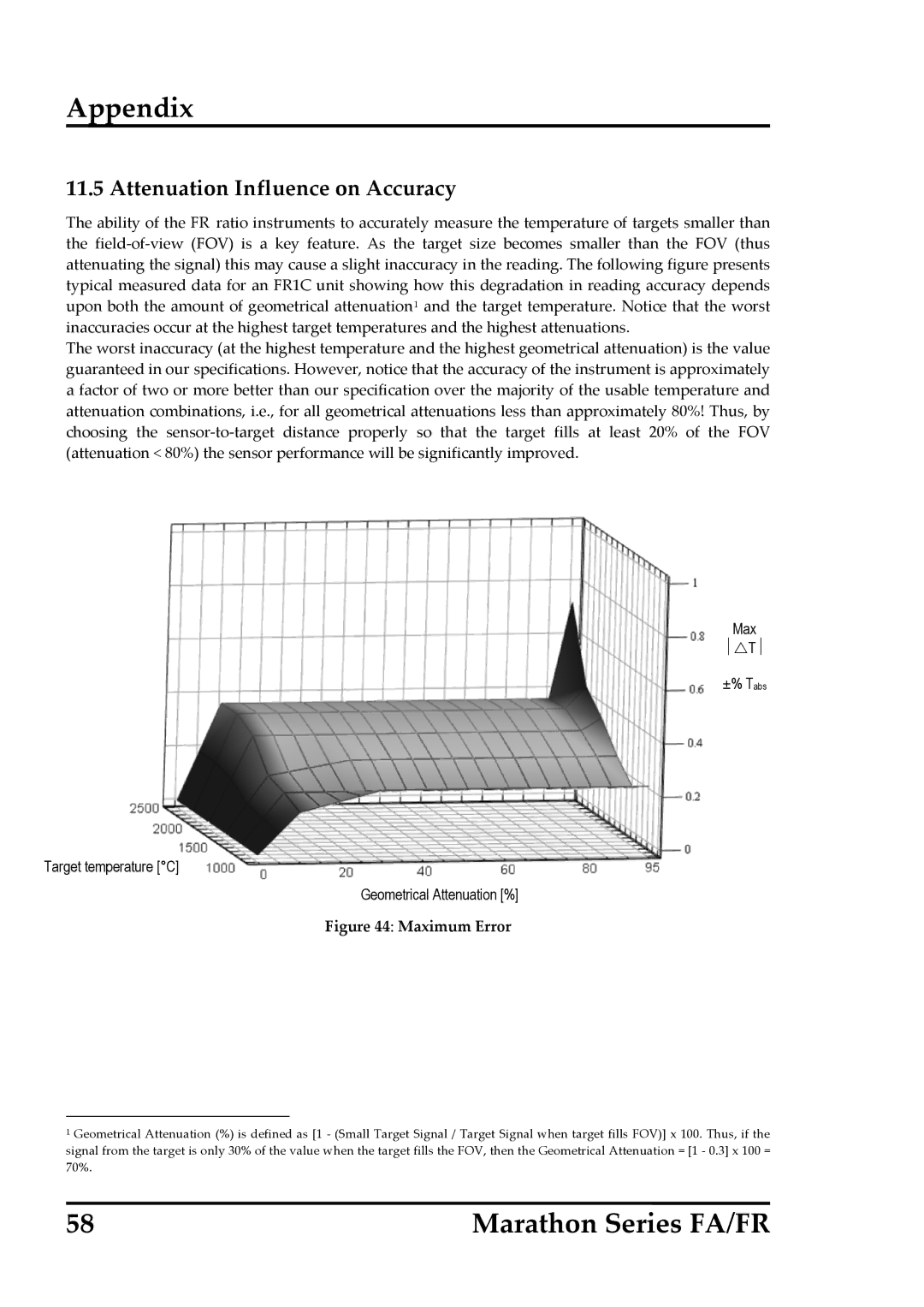
Appendix
11.5 Attenuation Influence on Accuracy
The ability of the FR ratio instruments to accurately measure the temperature of targets smaller than the field‐of‐view (FOV) is a key feature. As the target size becomes smaller than the FOV (thus attenuating the signal) this may cause a slight inaccuracy in the reading. The following figure presents typical measured data for an FR1C unit showing how this degradation in reading accuracy depends upon both the amount of geometrical attenuation1 and the target temperature. Notice that the worst inaccuracies occur at the highest target temperatures and the highest attenuations.
The worst inaccuracy (at the highest temperature and the highest geometrical attenuation) is the value guaranteed in our specifications. However, notice that the accuracy of the instrument is approximately a factor of two or more better than our specification over the majority of the usable temperature and attenuation combinations, i.e., for all geometrical attenuations less than approximately 80%! Thus, by choosing the sensor‐to‐target distance properly so that the target fills at least 20% of the FOV (attenuation < 80%) the sensor performance will be significantly improved.
Max
⏐UT⏐
±% Tabs
Target temperature [°C]
Geometrical Attenuation [%]
Figure 44: Maximum Error
1Geometrical Attenuation (%) is defined as [1 ‐ (Small Target Signal / Target Signal when target fills FOV)] x 100. Thus, if the signal from the target is only 30% of the value when the target fills the FOV, then the Geometrical Attenuation = [1 ‐ 0.3] x 100 = 70%.
58 | Marathon Series FA/FR |
